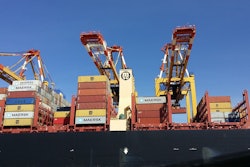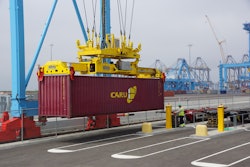As a major artery for barged grain transportation, the Illinois River is economically key to U.S. agriculture.
In 2019, over 6.5 million metric tons (mmt) of downbound grain (22% of all barged grain through the Mississippi locking system) passed through the LaGrange Lock and Dam — the final lock and dam facility on the Illinois River.
Given these volumes, outages on the Illinois can cause substantial shifts in shipping routes, modes, and prices. However, these outages can be planned, orderly, and minimally cost-intensive, or they can be unplanned, disruptive, and costly — as will be made clear.
In a planned measure this summer, the U.S. Army Corps of Engineers (USACE) is closing several lock and dam facilities on the Illinois to perform repairs and rehabilitation. Work on the mechanical and electrical systems and concrete should extend the lifespan of the facilities.
According to USACE, tows will be able to traverse the La Grange and Peoria facilities at the dam portion when water levels are high enough to allow passage. However, other facilities will not be navigable during the closures. The closures are likely to increase transportation costs for some grain shippers.
Possible Impacts on Shipping Routes and Prices
Fortunately, shippers who cannot access their standard Illinois River route this summer will have alternatives. Besides trucking grain longer distances to barge facilities or shipping by rail, shippers may continue storing grain until the river reopens.
Each of these options will increase costs, though the timing of the closures will likely minimize the cost increases associated with trucking longer distances. Compared to other times of year, the third quarter (when the river will be closed) tends to have the lowest trucking rates for the north-central United States, especially on long-haul routes.
For shippers who normally use the closed portions of the river, some barge options remain. Eighty miles of open river below LaGrange Lock and Dam will still be accessible. However, many shippers in Illinois will be closer to the Mississippi River than the open portions of the Illinois River.
For periods when both locations are available for shipping, freight rates for grain shipments originating from the Mid-Mississippi River are, on average, 19 percent higher in cash price than shipments originating on the Illinois River.
Logistics-based cost increases to carriers due to increased congestion in the Mid-Mississippi could push freight prices above normal. Nonetheless, signs of downward pressure on prices in the upcoming months have appeared: redeployment of towboats and barges from the Illinois River to the Mid-Mississippi may create surplus capacity. Mid-Mississippi rates have decreased recently as barges leave the Illinois, anticipating the closure.
The rate decrease suggests the surplus of towboats and barges on the Mid-Mississippi may be the prevailing factor in determining prices—curbing potential rate increases. Companies that must get grain on the Illinois, such as ethanol refineries, can charter small barge fleets to remain on the river to ensure a steady supply of grain.
Unlike barge and truck rates, which track more closely with harvest progress, rail freight carriage will likely be more costly during the weeks of the planned river closure. Bids/offers in the secondary shuttle market for delivery of railcars in July and August are typically lower than other months, but rise considerably in October. Bids for July and August are currently trading a little below average, down about $40 for July and $70 for August.
Shippers may have already purchased freight carriage for the closure, having hedged their risk, rather than purchasing freight carriage on the spot market during a high-rate period, in response to an outage. Storage is another possible alternative to shipping during the period of the closure. However, Illinois had a 70,000-bushel deficit of storage for grain in 2019, when benchmarked against total grain storage capacity and total fall grain supplies.
This deficit was smaller than normal for recent years: the average deficit in Illinois in the previous 5 years had been over 200,000 bushels. Because poor weather and other factors delayed harvesting in 2019, additional storage pressure may result if harvest begins early in 2020 and coincides with the later weeks of the Illinois River closure.
As indicated (in the week ending June 13, 2020) by the second-highest weekly total volume of grain traffic through LaGrange since 2013, elevators have made an apparent push to decrease grain inventories.
Shippers Will Adapt To Minimize Cost Disruptions
Overall, during the planned closure of the LaGrange Lock and Dam, grain transportation costs are likely to increase somewhat for affected shipments. Although premiums for guaranteed rail service for July and August shipments are low, particularly when purchased in advance, rail is more costly than barge. In the presence of seasonally low truck rates and adequate barge supply, shippers will likely continue to prefer barge transportation and to seek alternative points of origin to minimize cost increases.
The benefit of scheduling the river closure is it allows stakeholders to explore alternatives that would be unavailable in an unplanned closure. During a period of peak barge demand — i.e., the months coinciding with maximum harvest activity in the upper Midwest—an unplanned closure would be far more costly. In addition to avoiding the higher costs of an unplanned closure, the planned closure allowed institutions like CME to prepare for the changes and enact an organized response.
Information provided by USDA Grain Transportation Report.

















